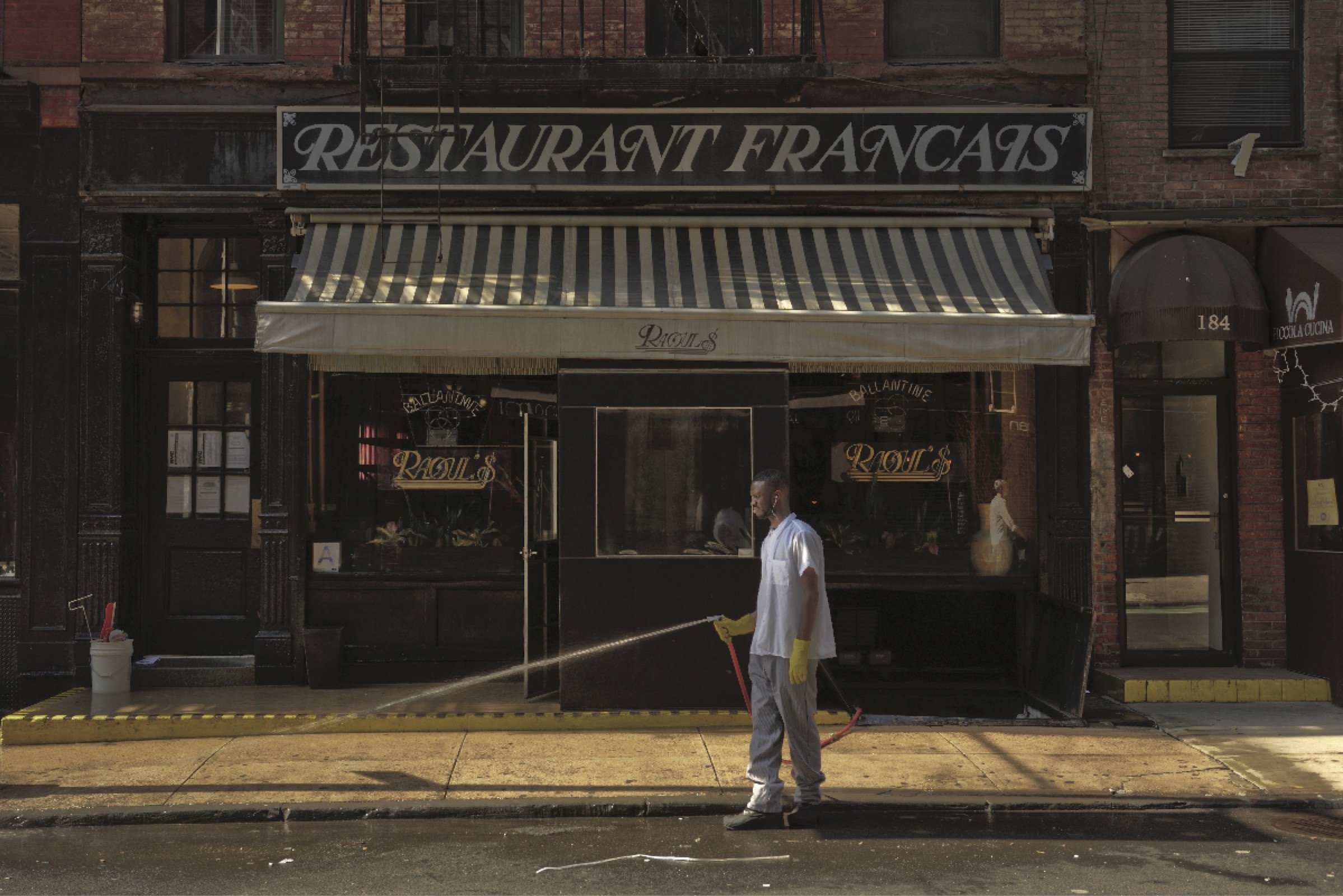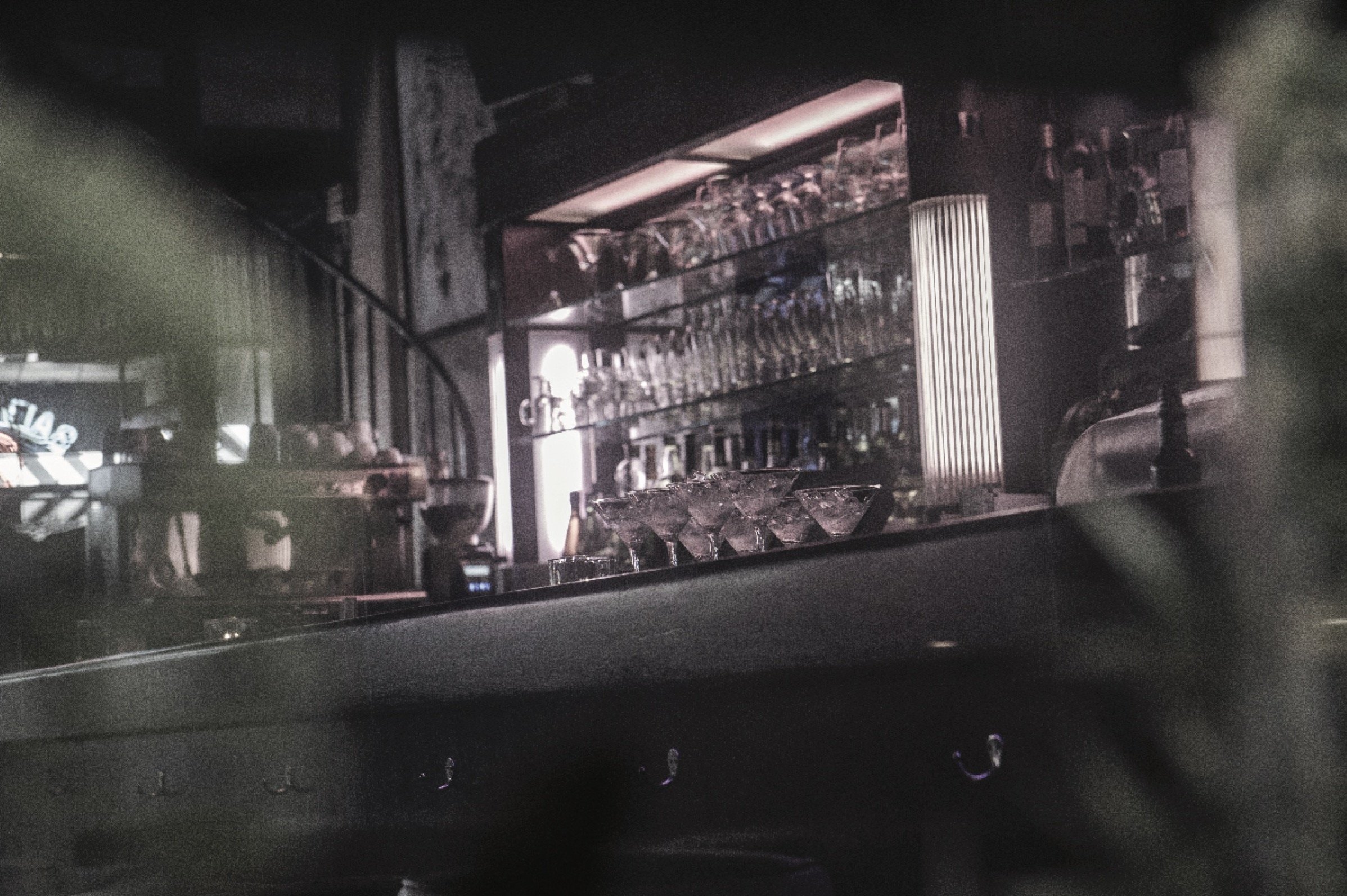raoul’s
I am not a New Yorker and never will be a New Yorker. I have turned this city down too many times; I doubt it would offer even one more opportunity. The day I knew I would never be a New Yorker the city lost some of its glamour, that fourth dimension that only the young move through. New York was no longer a place to conquer, but a place to endure. But sometimes even now, whether from mercy or malice, the city lies to me. Certain doors in New York open like a trick box at the right touch, offering a metropolis transformed–for a moment. Here, in these few familiar places, I am a New Yorker … so the city whispers to me. It tells me this at the Met, when I stand directly before Constantin Brancusi’s marble Bird in Space. It whispers this on a west-facing bench on the median in East Houston Street, where many mornings I’ve sat alone in holy silence to eat a bagel with lox and roe from Russ and Daughters. And the city whispers this–it tells me that I am a New Yorker, or might yet become a New Yorker–with a name, a name as soft as sewer steam, as simple as a kiss … Raoul’s.
It was snowing in Buffalo and raining icewater in midtown Manhattan. I was in the city for work. So was my father. And the Bills were playing the Bengals in the divisional round. Given this syzygy we called my cousin Joe, who lives in Astoria, and met at an Irish pub of no particular distinction to watch the game with other expats from the Niagara Frontier. I will not number our disappointments here. We drank flat draft Labatts and crunched cold cubes of chicken on nacho chips as both Bengals lines tossed our boys about in the delicate snow. When it was over we shook hands and parted ways, each slipping into a separate seam in the freezing rain. Even family would be a cold comfort in the big city tonight.
But what to do with the stubbornly remaining hours of an early Sunday? I wished I could have knocked them down like bowling pins. Not a single friend in the city–most transplants from Buffalo–would want to see me now. Too easy to slip together into a masochistic purgatory of replay footage and postgame takes. I could call someone. Ata, far away in the Bronx, with no ties to Buffalo or the Bills, would be busy putting his boy Tennessee to bed.
And Rachelle, back in the Valley, would be enjoying her first rare night alone in the apartment, with both our cats’ full attention. I had two choices, both lonely: spend money on autopilot in an unremarkable bar or tune out on Netflix in the shabbiness of the SoHo Four Points. Neither seemed like the reprieve I needed between the disgust of a squandered season and the beginning of what was sure to be another grueling week at work. Life itself was a dead dog in my arms. I had to put it down somewhere.
Then I remembered Raoul’s. My feet knew the way, took me through the Flatiron District and the near-total darkness of Washington Square Park. Soon I was on Prince Street, in the heart of SoHo, as deserted that night as it might have been in the early 60s, when the loft textile and paper and dry goods factories were closed for the night, and teenage Manhattanites would park their parents’ cars here to make out to the silent music of the cast iron. In this desolation the brown-and-white vinyl siding of Raoul’s sidewalk enclosure–a stubborn remnant of the early pandemic–flapped like the banners of Athens for Pheidippides.
I pushed into the warm, purpureal light of the bar and for a moment doubted my purpose. Raoul’s is always crowded, but there wasn’t a single seat for me. I was obviously in the way, in the very middle of the sole aisle leading from the street to the kitchen; white-shirted waiters raised trays of steak au poivre and made three-quarter turns to pass me. I didn’t belong. Then two fingers tugged the chain at my neck.
“What is it?”
The nails were French, the accent Greek.
“Garlic,” I said, tilting the gold pendant to catch the watery barlight.
She pulled back her upper lip to frame a pointed canine.
This was it–the familiar feeling–metamorphosis. To belong at Raoul’s is to be transformed.
A hostess waved. A space had opened in the middle of the bar; a placemat and rolled napkin marked it for me. “Are ye eating?” Angus, the longtime bartender, asked me. I blinked–and a steak tartare, frisée, and Plymouth martini appeared.
Brothers Guy and Serge Raoul traveled to New York from Alsace, France, in 1975 hoping to replicate the charm and quality of the original Raoul’s, a family bistro that had served the lush ried-land in France’s far east at least since the Second World War. According to legend, they stumbled into 180 Prince Street, an Italian bistro already equipped with a bar, booths, and furniture, and kept everything–“even the salt.” They opened on December 8, 1975. Guy cooked–focusing on simple, inexpensive, but sophisticated steaks and seafood–while Serge stood outside and beckoned locals to try the new “Restaurant Français.”
Luck played a part. SoHo, long an overlooked, sterile, and even seedy part of the city, was attracting a new class of tenants: artists, who often illegally occupied the high-ceilinged iron lofts of its former factories. And these weren’t just any artists, your Rothkos and de Kooning’s, that self-serious Tenth Street crowd. No … it was Andy Warhol, Keith Haring, Jeff Koons, and later Jean-Michel Basquiat–the Pop Artists and the Neo-Expressionists and the Pictures Generation who were making art fun again (or making fun of art). Fun and sexy and glamourous and eventually very, very lucrative. It’s a story told too many times–how the models followed the artists and the celebrities followed the models and Wall Street picked up the check. Yes, that happened at Raoul’s. Guy and Serge attracted a staff of artists and eccentrics and steadfast professionals who felt the restaurant was more than a job. (Pepe Diniz, a busboy and photographer, grabbed his camera from the kitchen and left a booth uncleared when he spotted Miles Davis across the street; the photograph now hangs above the swinging doors of the kitchen.) Regulars loved this familial feeling; celebrities, especially, felt they could disappear inside their favorite dark corners of the bistro’s nightly carnival. So Pacino had his table and DeNiro his; Johnny Depp and Kate Moss took the booth under the windows. Lorne Michaels, Dan Ackroyd, and John Belushi came three nights a week after writing and filming and stayed until 2 a.m. The Pulp Fiction cast filled the place on their opening night. And they kept coming back. Who cares about a Quentin Tarantino, a Sarah Jessica Parker, or an Ethan Hawke when Rob Jones, a sculptor and the longtime maître d’, is dancing in drag on top of the bar?
Anyone can have luck, but it’s a talent to keep it. What’s unique is that it’s still happening. Every influence that entered this dense and peppercorn-scented milieu left more than an impression or a legacy. It’s still alive.
A duo of excellent head chefs succeeded Guy–first Thomas Keller and now David Honeysett–gradually expanding the menu while maintaining the standards of the classics. New psychics and seers have followed Raoul’s original “Lady of Situations,” Nancy Stark, a tarot reader who for three decades gave her professional address as “Raoul’s, at the top of the spiral stairs.” And Karim Raoul, who started washing dishes here in the 90s, took over day-to-day operations from his father Serge. A second generation of management, kitchen talent, and wait staff have refused to stray from the restaurant’s founding fare and spirit.
Though the atmosphere is jazzy and madcap, achieving it is far from laissez-faire. Corwin Kilvert, a protégé of Keller’s and floor manager for almost a year as Raoul’s reopened following the first wave of the pandemic, once explained to me the attention to detail that underpins the restaurant’s eternal character. There are controls for lights at each banquette, for the speakers in every corner of the densely cluttered dining room. As floor manager, he said, he must attend to myriad dynamics of the place–the way that the sun slanting in off Prince Street might mute the neon purples of the bar, or how another bottle of Bordeaux approaching a corner booth might make the tiny table for two beside it a poor choice for the first-date couple that have just walked through the door. Even the burgers (the best in Manhattan; don’t argue) are a bit of stage magic. Raoul’s might serve as few as five a night, and all go to the customers who choose to sit at the bar, often in a line that curves south onto Sullivan Street, waiting to be let in, always at a little before five. Why? Because when the first guests with reservations arrive at five or five-fifteen, they will enter a restaurant with atmosphere: every bar stool taken, drinks poured, banter bubbling, the aroma of at least five enormous patties (a secret red meat blend) already emanating from the kitchen. Genius.
On the other hand, so much of the charm is chance. How else can you explain Gigi, of the vampiric canines, a part-time flight attendant on a private plane belonging to Trey Parker and Matt Stone, co-creators of South Park and The Book of Mormon? She, too, came looking for home and latched on to strangers. She introduced me to her party–thrown together just an hour before–comprising a Manhattan hairdresser and a couple from just outside Philadelphia, a chef and a marriage counselor.
“We come to New York once a month to get away from the kids,” the marriage counselor told me. “We stay for three nights and each night we eat here.”
“Just Raoul’s–three nights in a row?”
“We want what we want. Why go anywhere else?”
I gave my stool to a woman looking for desert–a D.C. transplant and rep for Big Scotch, she tells everyone at the bar to try an Ardberg espresso martini–and the night kicked into a higher gear. Soon I was talking with Tony, a bar regular who moved into the neighborhood forty years before, and who told me its history with a mouthful-of-marbles kind of New York Italian accent. He was a regular’s regular: longtime bartender at Arturo’s, another family-owned restaurant on Houston, offering a coal-fired pizza oven and jazz seven nights a week. He was comfortable on this side of the bar, had sea-legs for Raoul’s particular traffic and a way of throwing his eyes to catch his next drink.
“SoHo changed. This place hasn’t,” he said.
“Hasn’t changed in forty years? You can’t say that about much.”
“Well, this place and Arturo’s,” he said. “Try it next time–Tuesday, Wednesday, Thursday–ask for Tony. I’ll take care of you.”
We parted ways a little before midnight. I left with high spirits, new friends, free marriage advice (skip therapy, just read the Love Languages book, the counselor told me), and a promise to visit Tony. The next time I’m in the city, I just might. If I have two nights, that is. If I’m only here for one, you can find me at Raoul’s.
in print
photos by mark dellas




